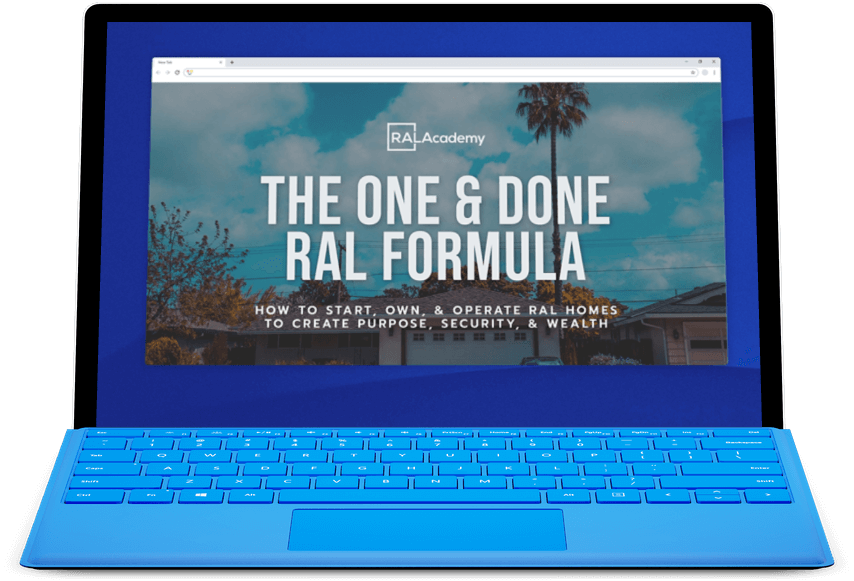Many people are preparing to make investment decisions, but without the right guidance, countless individuals will make the wrong choice.
What are the trends? What type of real estate should you invest in?
We have the answers to those questions and the needed information to guide real estate investors in the right direction.
There are 3 main types of real estate investment, and each type has multiple subcategories.
- Commercial real estate: retail, office, industrial, and multi-family.
- Residential real estate: single-family rental property, section 8 rentals, vacation rentals, small multi-family, and fix and flip.
- Land: Land for commercial development, land for residential development, land for farming, and land for mining.
According to commercial real estate investor and coach Victor Menasce, it’s no secret that senior housing is booming because seniors are coming in droves.
More than 10,000 baby boomers are turning age 65 every day and 4000 seniors turn age 85 daily. As a result, residential assisted living is a rapidly growing industry.
Robert Kiyosaki is the author of the book, Rich Dad Poor Dad. It promotes the importance of financial literacy and independence, business ownership, and building wealth through real estate investing. The book has sold over 40 million copies.
Robert Kiyosaki also understands that tens of millions of seniors will need assisted living in the coming years.
These are reassuring the reality that we’re in the right place at the right time.
However, senior living is also comprised of various categories. It’s important to understand that senior living comes in many forms.
Various Forms of Senior Living
Memory Care Homes
People with various forms of dementia, such as Alzheimer’s, usually require memory care homes that provide specialized care.
Why do these homes typically provide secure and safe environments?
With better staff-to-resident ratios, memory care homes are able to closely monitor the well-being of each resident.
In addition, memory care homes offer specialized programs, activities, and events that support cognitive abilities.
These programs also provide a sense of socialization and enjoyment.
Most importantly, memory care staff receive specialized training to provide quality care.
As a result, memory care homes impose an added cost.
Independent Living
Independent living is age-restricted communities offering housing for people 55 and older.
These types of communities do not ordinarily offer care services. Instead, they offer active styles and hassle-free home maintenance.
These homes can be apartments, free-standing cottages, villas, duplexes, townhomes, or condos.
Independent living homes come in a variety of floor plans and sizes. Ultimately, these homes offer paid services and residential amenities to make living easier and more convenient for seniors.
Services can include housekeeping, linen service, dining plans, transportation, security and more.
Amenities range from fitness centers, pools, multiple dining venues, beauty and barber salons, woodworking shops, art studios or crafting rooms, and entertainment spaces.
Skilled Nursing Facility or Nursing Home
When it comes to senior care, some terms are used interchangeably.
Skilled nursing facility, nursing home, and convalescent home are all terms used to describe certain types of residential facilities providing 24-hour medical care on-site.
Skilled nursing is a description of the type of service that is offered in residential homes, care facilities, hospitals, at home, and other senior care settings.
Skilled nursing care is a high level of medical care provided by licensed health professionals.
These licensed professionals provide wound care, intravenous therapy, injections, catheter care, physical therapy, and monitoring of vital signs and medical equipment.
Skilled nursing is always ordered by a doctor to be covered by Medicare, Medicaid, the VA or private health insurance.
Skilled Nursing care providers enable a senior to receive highly effective medical treatment while remaining as independent as possible.
CCRC – Continuing Care Retirement Community
A continuing care retirement community (CCRC), is a place where you have access to multiple levels of care on a single campus.
The benefit of CCRC is the continuum of care.
These communities are designed to equip seniors to be able to stay in the same environment despite health challenges.
ADC – Adult Day Care
Adult daycare is usually intended to relieve the caregiver or his or her duties for the day.
These safe and professional centers usually operate during typical business hours five days a week.
Currently, there are more than 4,000 of these programs operating in the United States, and a few offer evening and weekend services.
Regulation of adult daycare centers is at the discretion of each state, although the National Adult Day Services Association (NADSA) offers overall guidelines.
Benefits & Services of Adult Daycares
- It renders a break for the caregiver and the senior.
- It offers needed social interaction.
- It provides added structure.
- It supplies the following services: assistance with eating; taking medicines; toileting; walking; counseling; educational programs or mental stimulation; exercise programs; health monitoring; podiatry care; preparation of meals and snacks; social activities; therapies; and transportation services.
- It encourages social activities like crafts; cooking; exercise; field trips; games; gardening; holiday parties; music therapy; pet therapy; and relaxation techniques.
AHC – At-Home Care
At-Home care is supportive care provided in the home. This type of care may be provided by licensed healthcare professionals or even by a family member.
At-Home caregivers provide daily assistance to ensure that the requirements for Activities of Daily Living (ADLs) are met.
Right now there are about 65 million at-home caregivers in this country, whose services are estimated to be worth $375 billion.
Residential Assisted Living or Assisted Living
Assisted living is for people who need help with daily care.
Big box assisted living facilities range in size from as few as 25 residents to more than 120.
These large facilities are usually huge buildings surrounded by a parking lot.
Typically, different levels of care are offered.
Assisted living residents usually live in their own apartments or rooms and share common areas.
They have access to many services, including up to three meals a day; assistance with personal care; help with medications, housekeeping, and laundry; 24-hour supervision, security, on-site staff; and social and recreational activities.
In contrast, Residential Assisted Living is a two-fold business opportunity consisting of real estate and senior care.
The business also provides room, board, housekeeping, supervision, and personal care assistance with basic activities like personal hygiene, dressing, eating, and walking.
The services are similar to traditional big-box assisted facilities. However, residential assisted living provides a smaller, more intimate setting that feels like home.
As a result of the smaller, residential-style home, caregivers are able to offer better staff-to-resident ratios.
Naturally, because of this environment seniors experience fewer injuries due to life-threatening fall risks.
The industry is comprised of real estate owners and assisted living home operators.
An owner’s involvement depends on whether they want to be hands-on or hands-off.
How to Get Started in Residential Assisted Living
Owning and operating a residential assisted living home is comprised of multiple elements.
Getting started requires buying or leasing the real estate, licensing requirements, permits, finding quality caregivers, training, identifying your clients, marketing strategies and so much more.
The founder of the Residential Assisted Living Academy, Gene Guarino, is making the process easier.
The RAL Academy has a long history of putting investors on the path to success.
Residential Assisted Living Academy has built a nationwide network that functions as a family of assisted living providers.
As a nation’s leading resource for assisted living, the RAL Academy provides ongoing blog content, resources, and literature about best practices.
Students learn how to meet the high demand for senior housing and the keys to success to avoid obstacles and accelerate the startup process.
Learn everything you need to know from A-Z about owning and operating your assisted living business.
You can get started by registering for free access to this free Intro to Residential Assisted Living Course below.




